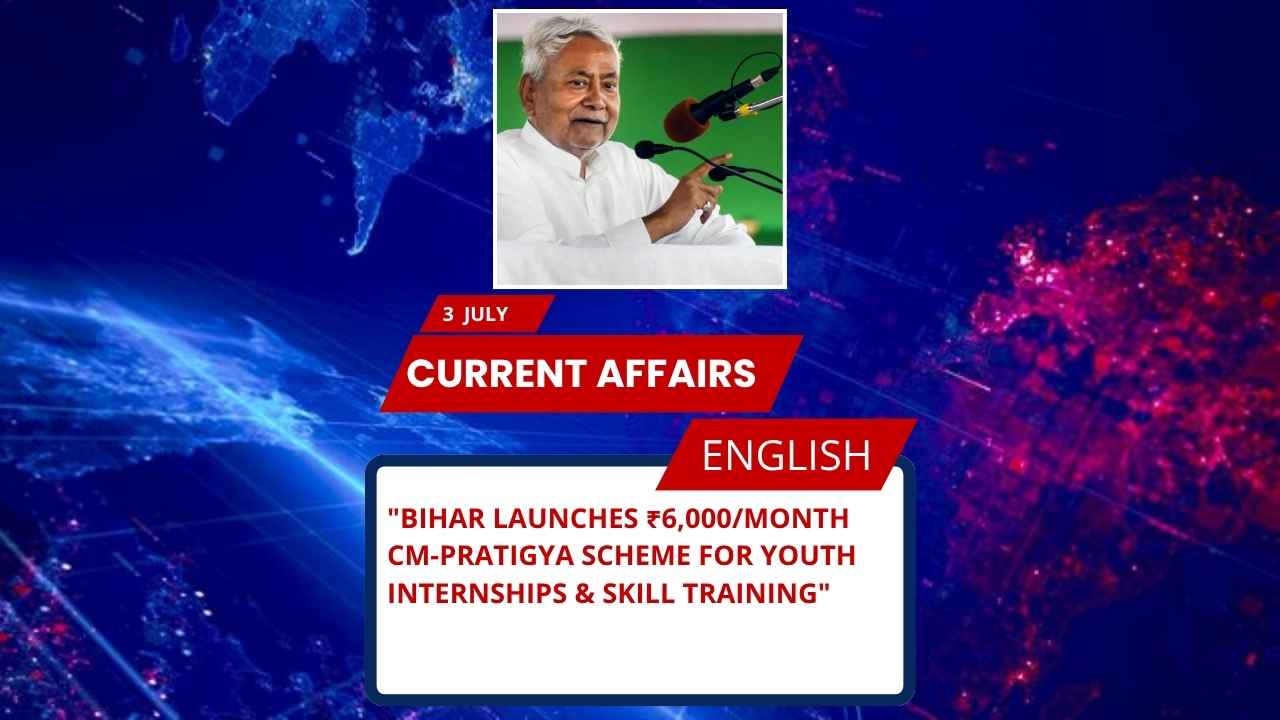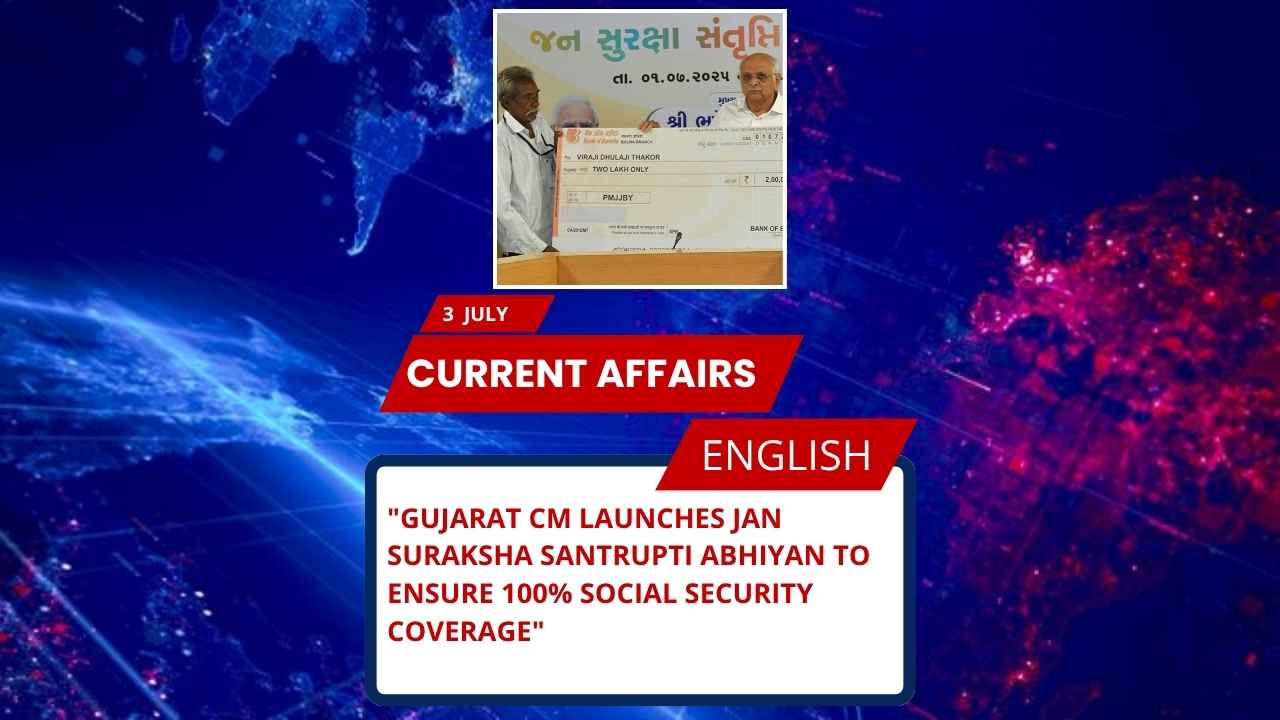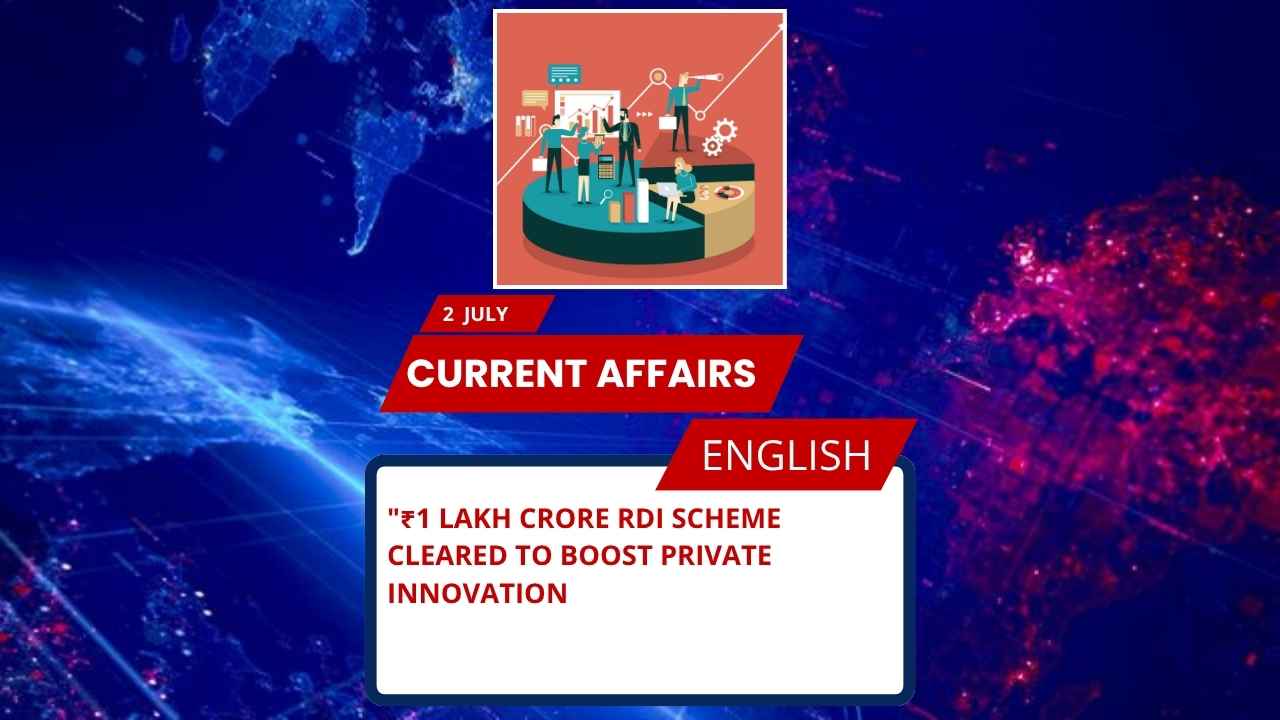
Key Points for SSC, UPSC & State Exams
- Bihar CM Nitish Kumar launches CM-PRATIGYA scheme under Saat Nischay-2.
- Monthly stipend up to ₹6,000 for skill training and internships.
- Target: 1 lakh internships by 2030.
- For Class 12, ITI, diploma, graduates & postgraduates.
- Political significance ahead of Bihar Assembly Elections 2025.
- Focus on skill development, self-reliance, and youth empowerment.
Complete Details: Bihar’s CM-PRATIGYA Scheme
Introduction
In a strategic move to boost youth empowerment and employability, Bihar Chief Minister Nitish Kumar launched the CM-PRATIGYA scheme (Chief Minister – Promotion of Readiness, Awareness and Technical Insights for Guiding Youth Advancement). This scheme is an integral part of Saat Nischay-2, Bihar’s flagship development initiative.
The scheme reflects the state government’s strong commitment to building a technically skilled, employment-ready, and self-reliant young generation.
Objectives of the CM-PRATIGYA Scheme
- Provide financial assistance to youth during skill training and internships.
- Offer industry-relevant skills and practical exposure.
- Bridge the gap between education and employment.
- Encourage leadership development and career progression.
Monthly Financial Assistance Details
| Qualification Level | Support Provided |
|---|---|
| Class 12 Pass | ₹4,000 per month (Skill training) |
| ITI/Diploma Holders | ₹5,000 per month (Training) |
| Graduates/PGs | ₹6,000 per month (Internship) |
Internship Target (2025–2030)
- 1 Lakh internships across various institutions by 2030-31.
- Internships aimed at practical learning and employability enhancement.
- Focus on youth from rural and underprivileged backgrounds.
Political and Strategic Importance
With the Bihar Assembly Elections 2025 around the corner, this scheme is seen as a key political strategy to address rising unemployment, especially among the educated youth. It could significantly influence voter sentiment in favour of the Nitish Kumar government.
Vision for the Future
Chief Minister Nitish Kumar emphasized that the long-term vision is to build an ecosystem where the youth of Bihar are:
- Skilled
- Employed
- Self-sufficient
- Technologically aware
State Profile: Bihar (Must-know for exams)
- Capital: Patna
- Chief Minister: Nitish Kumar
- Governor: Rajendra Arlekar
- Major Rivers: Ganga, Kosi, Gandak, Son
- Important National Parks/Sanctuaries:
- Valmiki National Park
- Bhimbandh Wildlife Sanctuary
- Major Industries: Agriculture, Handloom, Dairy
- Exam Significance: Key political and economic state in East India, frequently in news for developmental schemes.
Possible MCQs for Exams
1. Under the CM-PRATIGYA scheme, how much monthly support is provided to postgraduate youth during internships?
A) ₹4,000
B) ₹5,000
C) ₹6,000
D) ₹7,000
✅ Answer: C) ₹6,000
2. CM-PRATIGYA scheme is launched under which major Bihar development initiative?
A) Har Ghar Jal
B) Skill India
C) Saat Nischay-2
D) Bihar Udyami Yojana
✅ Answer: C) Saat Nischay-2
3. What is the internship target under the CM-PRATIGYA scheme by 2030?
A) 10,000
B) 50,000
C) 1 lakh
D) 2 lakhs
✅ Answer: C) 1 lakh
4. Which of the following is not a benefit under the CM-PRATIGYA scheme?
A) Free laptops
B) Monthly stipend
C) Skill development
D) Internship opportunity
✅ Answer: A) Free laptops
5. CM-PRATIGYA stands for which of the following?
A) Chief Minister’s Plan for Rural Action
B) Promotion of Readiness, Awareness and Technical Insights for Guiding Youth Advancement
C) Public Reform and Training Initiative by Government Youth Action
D) Pratigya for Education and Jobs
✅ Answer: B) Promotion of Readiness, Awareness and Technical Insights for Guiding Youth Advancement
UPSC-style FAQs (Based on Mains Answer Writing Standards)
Q1. What are the key objectives of Bihar’s CM-PRATIGYA scheme, and how does it align with India’s vision for youth empowerment?
Answer:
The CM-PRATIGYA scheme aims to bridge the gap between academic education and employment by providing skill-based training and paid internships to youth. Its objectives include enhancing employability, developing leadership skills, and offering financial support during training. It aligns with national programs like Skill India and Startup India, emphasizing self-reliance (Aatmanirbharta) and youth-centric development. This state-level initiative complements India’s broader vision of becoming a globally competitive skilled economy.
Q2. How can schemes like CM-PRATIGYA influence electoral outcomes in a state like Bihar?
Answer:
In a politically sensitive and economically developing state like Bihar, schemes targeting youth and employment can play a pivotal role in electoral outcomes. With unemployment being a top voter concern, CM-PRATIGYA addresses a critical issue by offering tangible benefits. It strengthens voter trust, especially among first-time and young voters, and can be perceived as a sign of good governance, thereby improving the incumbent government’s chances in elections.
Q3. Assess the significance of public-private internship programs like CM-PRATIGYA in enhancing real-world skills among graduates.
Answer:
Internship programs like CM-PRATIGYA serve as a vital bridge between theoretical knowledge and practical application. They expose students to industry standards, promote workplace readiness, and improve soft skills. Such programs make graduates more competitive in the job market, reduce skill gaps, and promote entrepreneurship. In India’s context, with a large youth population, these initiatives are crucial for tackling underemployment and boosting productivity.
Q4. How does CM-PRATIGYA compare with central government initiatives like Skill India Mission?
Answer:
While the Skill India Mission operates at the national level, aiming to train over 40 crore people by 2022 (target extended), CM-PRATIGYA is a state-specific model focusing on both skill training and internships with financial support. Unlike many central schemes that lack direct stipend provisions, CM-PRATIGYA provides financial incentives, making it more inclusive and impactful for economically weaker youth segments. It complements Skill India by catering to localized needs and sectors in Bihar.






